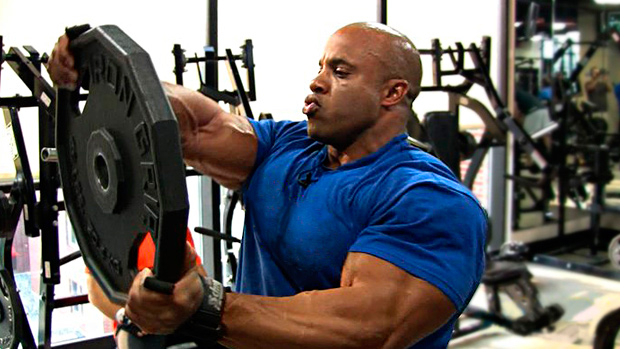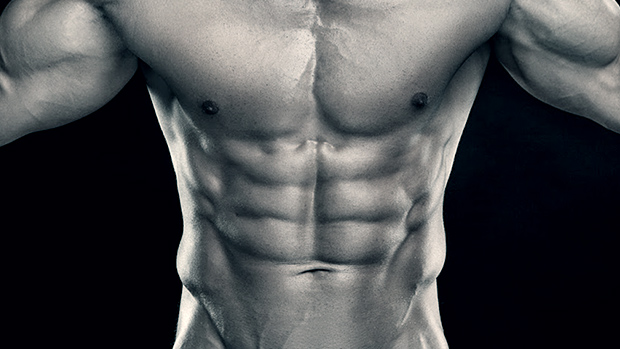The Top-Secret Secret
It turns out that I've been using a training "secret". One of my friends, Ben, came out to spend a week under my guidance – another way of saying "hang out and work out" – and he pointed out that one of my Top Secret Training Protocols is truly unique, so unique it must be shrouded in science. Unfortunately, this secret is just one of those things that I figured out along the way.
Sometimes I think that I've been coaching and training so long that I just take for granted this thing called "experience". As an athlete, I always felt that w? wasted up to an hour of practice doing this thing called a "warm-up". If you ever had a PE course, you know what I'm talking about:
Two laps of a "jog"
Jumping jacks (smartly counting out every fourth rep)
Cherry pickers
Yoga stretches
Hula Hoops
...and on and on and on.
The jog had little to do with anything, save to train you for taking last place in a race, and the rest of it had little to do with Jack, cherries, yoga, or Hawaii. At the end of the warm-up, I always felt tighter and less ready to practice.
Why? Because practice never related to anything we did in the warm-ups! So, I'm going to let you in on my little "secret." Ready? Here it is:
The warm-up is the workout.
Do It Every Day
In 1982, the school I was working at hired Chris Long to be our wrestling coach. We soon discovered that both of us shared a hero: Olympic gold medalist and wrestling coach, Dan Gable.
 |
Gable and his 1972 Gold Medal
Chris shared Gable's coaching method with me:
"If it is important, do it every day. If it's not important, don't do it at all."
You know, it's hard to argue with this... but we all do anyway! I've spent the best part of the last three decades asking coaches from every discipline this question: "What are the three keys to winning in your sport?" I have yet to find a coach that can't name the three. From "making free throws when tired" to simply "turn the right foot," coach after coach after coach has had a clear vision of what it takes to win.
Then I ask two follow-up questions:
1. Do your athletes know this?
2. Do you practice these every day?
Never, not even once, has a coach answered "yes" to both. It's not that the coaches are ignorant of this little paradox ("This is my formula for winning but nobody but me seems to know it") rather, they're stuck finding a place or time in practice to ensure the keys are addressed.
It's true with everyone. The person interested in losing body fat or gaining muscle deals with the same issues: "I know I need to [fill in the blank] but I don't have time to deal with it after my 45 minute treadmill walk watching Oprah discuss Katie and Tom, my Pilates class, and then working my abs on the Ab Blaster 2000!"
So, let's look at warm-ups in a whole new light. Using Dan Gable's paradigm, I'd like to suggest three ideas – levels of implementation, if you will – that I've used for the past few decades. Remember, if it's important, do it every day. (Wow, a sentence with the words paradigm and implementation. That "Word of the Day Toilet Paper" is working!)
The Three Levels
Level #1: The first level of implementing this idea is rather simple – so simple you might just ignore it. You decide that you're bad at pull-ups. How do you know? Simple, you can't do twenty perfect pull-ups. Why twenty? Well, in the ninth grade that's how many you needed to max out the test. Why perfect? Why not?
So, each and every training session from now until you get twenty, do pull-ups. Yes, every workout. You can do one set of "as many," a couple of sets, or what I have my athletes do every day: three sets of eight. It's a program as old as the hills and it seems to work.
Can't do three sets of eight? Do three sets of what you can do. In a few months, you'll amaze yourself with your progress. Do the rest of your arm swinging and treadmilling and stair stepping and whatever you call your pre-workout stuff, then do your regular workout.
I did this a few years ago with front squats. At Olympic lifting meets, I'd snatch well, then go into the clean & jerk and get two attempts, then get buried in the bottom position on my third. So, I decided to front squat EVERY day. ("If it's important...")
 |
Dave Draper and the front squat
I used 165 pounds and did two easy sets of five. Every day. For about two months, I kept my bar in my garage loaded at 165 (I only had a bar, two 35s and two 25s; I was poor) and no matter what, I did my two sets of five. I don't have the science to explain it, but after that I never missed recovering from a clean again. (The front squat is how you recover from a heavy squat clean.) How did this work? I don't know, but if it's important, do it every day.
Do this with a weak body part, a weak lift, or something you're trying to learn. Don't force it, just keep banging away day after day and soon, the body is going to grant your wish; you're going to have some level of success here.
Yes, it's that simple: Do something you think is important every day. Oh, a couple of hints:
• Tell those significant people in your life you love them every day.
• Spend less than you earn every day.
• Eat fiber at every meal, eat protein at every meal, drink water, sleep nine hours, take fish oil capsules, and exercise every day.
I know you know this...
If you like the first idea, you might want to try the second. I've been a fan of Percy Cerutty for years. Cerutty was an Australian track coach/guru/fitness buff/nutcase who coached some of the best middle distance runners in the world in the late 1950s and early 1960s.
Some consider him a nutcase, but rarely have I found normal people to have all the answers. Again, if you strive for normal, spend an hour at a Las Vegas casino and take inventory on the what "normal" is in America today.
Why was he crazy? He told runners to:
• Run up hills.
• Lift weights.
• Eat odd foods like oatmeal, veggies, and fruit.
 |
Percy Cerutty training
Arrest him, I say!
Before I was born, he insisted that all athletes do the big five lifts:
1. A deadlift.
2. A form of pressing. Cerutty liked a lift called the "bench press." I'm not sure if it ever become popular.
3. An explosive full body move. He liked the heavy dumbbell swing.
4. A form of pulling. Cerutty liked pull-ups and cheat curls. Cheat curls are like a power clean with a curl grip (power curls) or that bouncing heavy bar curl you see every gym-rat in the world do when he gets tired from strict curls.
5. An ab exercise. If deadlifts make you go one way, the ab exercise should strengthen you in the other.
After going heavy on these lifts with two to five sets of two to five (save for swings and abs where the reps go fairly high), you hang from a pull-up bar and stretch for a few minutes.
Recognize it? I think I've recommended this workout for thousands of people, after I, uh, invented it.
Level #2: My second recommendation for expanding your notion of warm-ups is simply this: look over your plan for the day and add two sets of the "big five" lifts for whatever you're NOT doing that day.
So, on an old fashioned arm day of biceps and triceps work, toss in the deadlift, the swing, and the ab work, and let the press and pulls get dealt with by the skull crushers, Zottman curls, hammer curls, and masticated rear tricep squeezes or whatever. You can add to Cerutty's five with the inclusion of squats and rotational work, but I begin to worry when my training starts to get over 200 core lifts in a week.
The idea here is simple: Keep your specialized training, but continue to keep in contact with the big general movements each workout. It's an easy way to have each workout become a full body session with an emphasis on a body part. Don't go crazy on variations; keep pounding away on basics. From a strength coach's perspective, you'll get stronger and stronger in these basics, which can't help but make a difference in your other long term goals.
Level #3: Finally, we can think about the approach I've begun to use with my athletes. Basically, the warm-up is the workout. I've been using two to six week short cycles of only two lifts. We max at the end of the cycle...within reason. Pick two lifts:
Bench press and front squat (a great pair)
Bench press and deadlift (the answer to the question: "Am I getting stronger?")
Military press and snatch grip deadlift (odd combo, but amazingly insightful for pointing out weaknesses.)
Or, anything you choose.
If you work out twice a week, have one day be the "fast day". Bar comes down slow and up fast with very reasonable weights. The other day is a "max" of some kind: either a variation (off boxes, boards, or whatever), or a rep max (fives, threes, doubles...you know the drill.) If you try this three times a week, think fast on one day, max on another, and a nice "medium workout" on the third, whatever "medium" means to you.
Those two lifts come at the end of the warm-up. Now, the warm-up is this:
1. Overhead squats, three sets, with either a light bar or PVC pipe
2. 40 meters of rock carries
3. One-handed overhead carries (40 meters)
4. "Waiter walks" (Each arm) Lock the weight out overhead and walk as far as you can, like a waiter. Those funny muscles around your waist are called "obliques." You may have never noticed them before!
 |
The Waiter Walk
5. One-handed side carries (40 meters)
6. Suitcase walks (Each arm)
7. One-handed overhead carry and one-handed side carry (opposite hand, of course), 40 meters and switch hands
8. Farmer walks with heavy load, 40 meters or until finished
9. Sled drags, 40 meters
10. Sled drags with farmer walks, 40 meters
11. Sled drag with rock carry, 40 meters
12. Pull-ups, 3 sets of 8
13. Push-up variations or dips, 3 sets
14. Medicine ball throws from the sit-up position, 25 reps
15. Swings for one minute (I recommend "doubles," one kettlebell or dumbbell in each hand)
16. Weighted rotating sit-up (Go clockwise with a small circle, bigger circle, huge circle, then opposite, 3 sets)
You can include anything else you like. I like to note: "Hey, we're done with the warm-up!" as my athletes fold over and look forward to something fun like max front squats and bench press.
What? Yes, the warm-up is the workout.
Review
I've just sketched out some ideas here. To review:
1. Try working a weak exercise, lift, or body part each and every workout as part of your warm-up.
2. With a body part workout, add a few sets of a few reps with whole body lifts that you won't be targeting.
3. Put together a series of walks, drags, carries, lifts, moves, and exercises that challenge you in a variety of ways but are still "doable," and toss in a workout as a bit of dessert at the end of your training day.
To repeat, this is a paradigm shift for many lifter types. What am I saying? "If it's important, do it every day."




